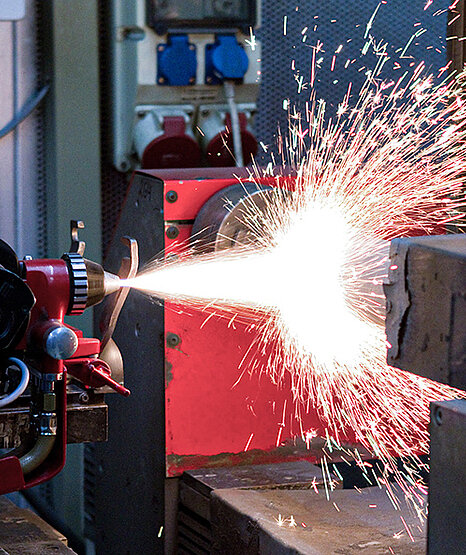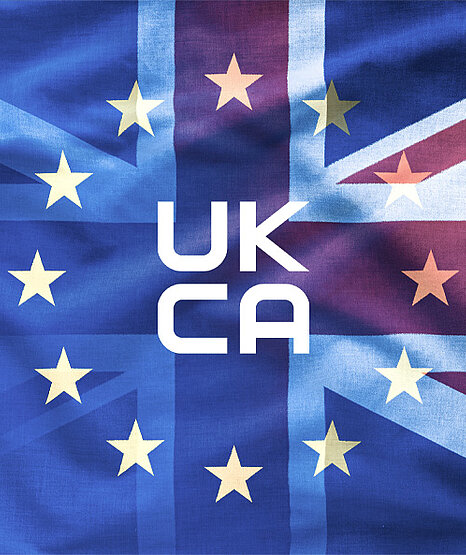Quality assurance and standards in welding technology
Establishing an effective quality management system in welding technology is often not an easy process, as standards increasingly rarely provide specific instructions. Nevertheless, product liability rests permanently with manufacturers, urging them to find ways to ensure the quality of their products. In this context, manufacturers frequently use the DIN EN ISO 3834 ff standard, which defines the requirements of welding companies and regulates the principles of quality assurance for welded products. Certification according to this internationally recognized standard can give manufacturers more legal certainty and make them more competitive in the global market.
Application of procedure tests according to DIN EN ISO 3834 ff
Appropriate qualification of the welding procedure used is an essential component of DIN EN ISO 3834 ff. This is ensured, among other things, by conducting welding procedure tests.
These procedure tests in welding technology are necessary, for example
- as proof of manufacturing based on the application rules
- as protection with respect to product liability
- at the customer’s request.
Proof of welding production that complies with the regulations is required, for instance, for welding procedures according to DIN EN 1090-2 in EXC 3 and EXC 4 or for making welded assemblies that were manufactured according to the pressure equipment directive (Directive 2014/68/EU). In both cases, welding procedure tests are mandatory, but for the latter, the procedure tests must be carried out by a notified body.
However, even if it is not necessary to prove that manufacturing complies with a specific regulation, procedure tests are often required – e.g. for protection from product liability. For example, companies that purchase welded assemblies sometimes require a procedure test for relevant joints, often with additional confirmation by an independent test facility. To ensure legal protection in the event of damage, for example, vehicle manufacturers require confirmation from a notified body or from a recognized or accredited certification or inspection body, particularly for the acceptance of welded assemblies that are relevant to crash or service life.

Who is responsible? Internal inspector or notified body?
Unfortunately, there is no uniform policy as to when an inspector (appointed internally or externally) or a test facility (e.g. a notified body) is responsible for a procedure test. According to DIN EN ISO 15614-1, for example, both options are legitimate for checking the compliance of a welding procedure with the applicable standard.
On the other hand, other DIN standards such as DIN EN 1090-2 (steel structures) and DIN EN 15085 do not make any specifications regarding inspectors or test facilities. The situation is different for pressure equipment. In this case, the European Directive 2014/68/EU clearly specifies that welding procedure tests may be conducted only by a notified body or recognized test facility. The same applies to joints according to AD 2000 HP 0 or AD 2000 HP 2/1 and AD 2000 HP 5/2.
To be on the safe side, the higher-level application rules should always be consulted for specifications on the responsibility of inspectors or test facilities.

Welding procedure tests in steel, machinery, and vehicle construction
The regulations concerning steel, machinery, and vehicle construction, where procedure tests can theoretically be conducted “internally”, remain largely unclear.
Reasons for not having the welding procedure tests conducted by a notified body or a recognized or accredited certification or inspection facility lie somewhere between presumed lower costs, potential for excessive supervision, and fears of lengthy and non-transparent test processes. Proper testing bodies provide their customers with a meaningful test concept, point out necessities and options, and offer their support.
The DIN EN ISO 15614-1:2017-12 standard, which after being revised now requires a scope of application to be specified, can quickly present even experienced welding inspectors with the problem of whether the welding process can withstand an external audit, depending on the complexity of the process and the parameters. Here, it could be more efficient to pay for sound expertise than spend time on an intensive study of the standards.
In addition, the question arises as to whether a manufacturer has sufficient testing resources such as an accredited testing laboratory, as required by DIN EN 15085-2:2008-01. Here again, DIN EN 1090-2 does not make any specifications in this regard. However, the DVS 1711 directive recommends using an accredited test laboratory that meets the requirements of DIN EN ISO/IEC 17025, in order to increase confidence in the product quality and achieve considerably greater acceptance.
Finally, it should be mentioned that accredited test laboratories do not accredit or inspect themselves; in Germany, accreditation is always based on an intensive independent appraisal by the DAkkS (German Accreditation Body) as a third party.







